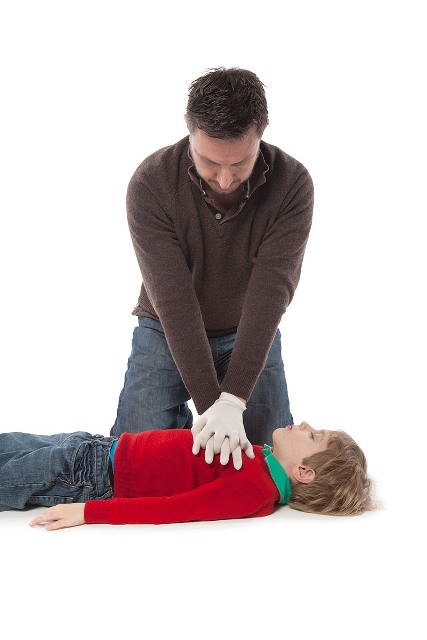How to perform CPR
Date: Wednesday, 29 June 2016. -
Blog, First Aid, Defibrillators, Courses
Cardio Pulmonary Resuscitation is the process we use to maintain the blood flow around the body and to keep the heart in a shockable rhythm ready for the arrival of a defibrillator.
The ratio of chest compressions to rescue breaths during CPR is 30:2.
When is CPR necessary?
When a casualty is unresponsive and shows no signs of breathing you must carry out CPR immediately and contact the emergency services team.
Sometimes when a casualty is breathing but they have lost consciousness we place them in the recovery position to monitor them closely to see if their condition deteriorates.
Some people in cardiac arrest experience laboured breathing that sounds like gasping or gurgling, this is quite often mistaken for normal breathing and the emergency services are given an inaccurate description of the casualty’s condition wasting critical time. If you notice a casualty displaying these symptoms you must begin CPR immediately.
Where do I start?
First things first, place the heel of your hand in the centre of the casualty’s chest at the end of the breastbone and then place your other hand on top and interlock your fingers. Kneeling on the floor, position yourself so that your arms are straight and use your full body weight to apply pressure to their chest. Press down by 5-6cm and then release so that the chest returns to its normal position, continuing doing this 30 times at a rate of 100-120 compressions per minute.

How do I maintain effective chest compressions?
One of the trickiest aspects of CPR is ensuring that you keep a regular rhythm, now it might sound a little strange but the perfect way to ensure that your compressions are at a regular tempo is by following the beat of the Bee Gee’s song Staying Alive. Don’t believe us? Check out this video with none other than Vinnie Jones.
Will I hurt them?
Many people worry about hurting the casualty when they carry out chest compressions and don’t press hard enough. It is important to remember that when a casualty has lost consciousness and has stopped breathing they desperately need CPR in order to keep a shockable heart rhythm and stay alive. Without chest compressions, oxygenated blood won’t be able to flow through the body reaching the vital organs and they will begin to shut down.
During a critical emergency, we must ask ourselves - what’s a few broken ribs when someone’s life is at stake?
When should I stop?
Unfortunately, it is highly unlikely that the casualty will come round with CPR alone; therefore, you should carry out CPR until the arrival of a defibrillator.
CPR can be very tiring so if you’re on your own shout for help and then you can alternate rescuers every two minutes and ensure that the casualty is receiving the best treatment possible.
Refresh your knowledge of CPR on the go with our free app. Simply search for defibshop in the Google Play Store or App store to learn the vital steps and discover how to use an AED to administer lifesaving first aid.
